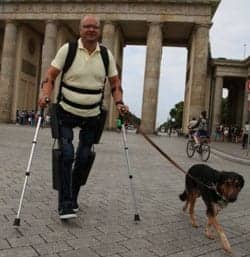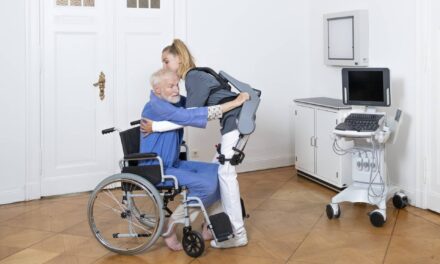Wandercraft, the developer of the world’s first self-stabilizing walking exoskeleton, designed to help people with motor impairments to stand up and walk again, has unveiled its newest innovation, the Personal Exoskeleton, at its U.S. headquarters, Cure, a healthcare innovation campus in New York.
Further Reading: Wandercraft Brings Atalante Exoskeleton to the US
Matthieu Masselin, Wandercraft’s CEO, has revealed the hybrid robotics technology powering the Personal Exoskeleton, giving it the potential to change the lives of people with walking disabilities forever by vastly improving their mobility.
Once cleared, Wandercraft’s Personal Exoskeleton could be the first and only self-stabilizing exoskeleton in the market for personal everyday use to help impaired people walk hands-free in their own communities. The Personal Exoskeleton builds on engineering and robotic breakthrough innovations already incorporated in Wandercraft’s Atalante X exoskeleton, the world’s first self-stabilizing walking exoskeleton for rehabilitation support. Atalante emulates human walking, provides hands-free multi-directional locomotion, and is currently in use in rehabilitation hospitals and walking centers across the USA, Europe, and Brazil.
Wandercraft’s Personal Exoskeleton is compact and designed to operate in unpredictable urban environments, for example allowing its wearer to control their direction, cross steps or sidewalks, and maintain their balance despite disturbances or pushes.
“Driving innovative solutions that support the mobility-impaired community is at the heart of what we do at Wandercraft,” says Matthieu Masselin, CEO of Wandercraft. “We want a future where people with mobility impairments have a new option to vastly improve their independence, inclusion, and health. Today’s exclusive unveiling of our groundbreaking innovation in robotics engineering is a key moment where we will provide a rare glimpse into the future of mobility.”
Featured image: Wandercraft





